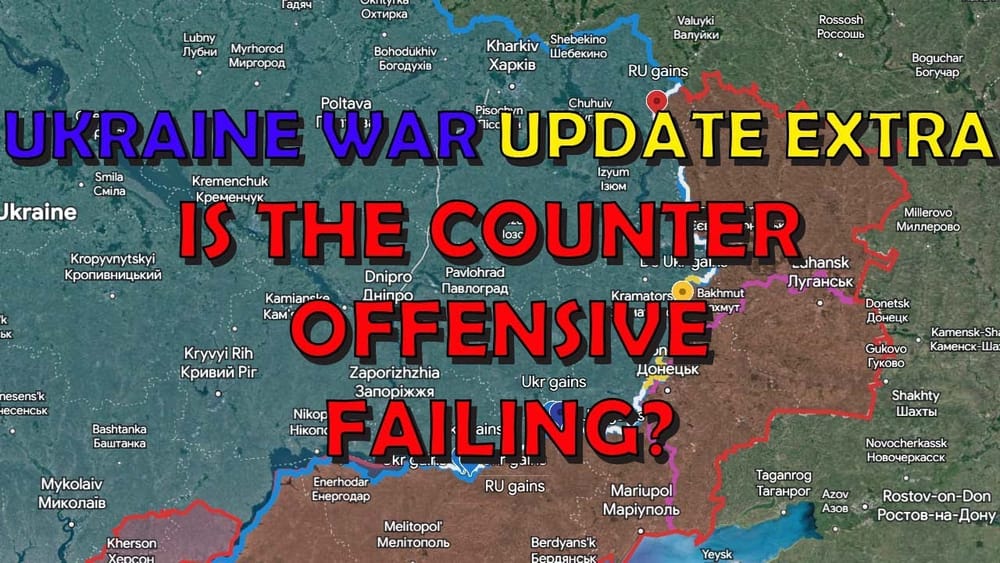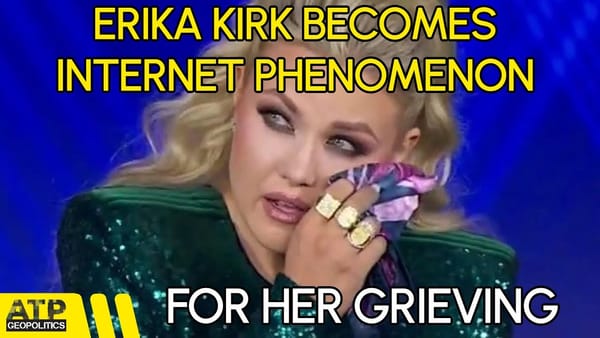Ukraine War Upd. EXTRA: Is the Ukrainian Counteroffensive Failing?
Table of Contents 📖
| Topic ID | Topic Title | Timestamp |
|---|
"Don't pressure the Ukrainians to push harder than it's feasible or prudent during the current offensive."
Hello Team!
Jonathan provides an upfront apology for potential background noise and computer lag during the video due to electrical work being done. The video will discuss whether the Ukrainian counter-offensive has been a success or failure.
Return to top⤴️
Dueling narratives about Ukraine
Paul Krugman notes there are two narratives about Ukraine: 1) It's a stalemate 2) Ukraine is gradually winning a battle of artillery attrition and Russian forces will eventually snap Krugman observes Ukraine optimists like Mark Hartling and the Institute for the Study of War are making predictions on record, while the stalemate narrative comes from unnamed sources. This says something about who is willing to risk being publicly proved wrong.
Return to top⤴️
Evaluating success and failure
When evaluating if something is successful or failing, it depends on the goal you are working towards and the metrics used to measure attainment of that goal. These will be different in various places along the front line and at different times.
- In Bakhmut, the primary Ukrainian goal is to fix Russian troops in place. Taking back territory is a tertiary goal.
- In the south, the initial goal was to gain territory but this changed after losses. For the last 2 months, the main southern objective has been attrition of Russian artillery, air defense systems and equipment.
New York Times article critique
The New York Times article suggests the main Ukrainian goal is to cut off the Russian land bridge between Russia and Crimea by taking Melitopol. However, Jonathan argues this is an overarching goal that first requires achieving smaller sub-objectives like equipment attrition. The article states Ukraine has divided troops equally between east and south instead of concentrating on Melitopol as advised by the US. However, Ukrainian troops in the east around Bakhmut are fixing Russians there so they can't reinforce the south. US officials are quoted saying Ukraine should punch through Russian defenses even if they take more losses. Jonathan finds this dubious as Ukraine lacks air superiority the US would normally rely on. Instead, Ukraine needs to attrit Russian artillery and air defenses first. In general, Jonathan believes the US officials quoted have an overly simplistic view that doesn't account for Ukrainian tactical realities and constraints compared to how the US military would operate.
Return to top⤴️
Shashank Joshi comments
Shashank Joshi from The Economist makes two key points: 1) We need to distinguish between what is likely and what is possible regarding the offensive. Russian lines could crack but that doesn't mean it's likely. 2) Assessing Ukraine is unlikely to break the land bridge in this offensive doesn't mean having to favor a diplomatic settlement or territorial concessions to Russia. It can mean thinking about how to resource Ukraine for a longer war into 2024.
Return to top⤴️
Lawrence Freedman analysis
Lawrence Freedman, Emeritus Professor of War Studies at King's College London, provides an in-depth analysis in a Substack post titled "Ukraine's offensive. Is it failing?" Key points:
- Recent US media reports have suggested the Ukrainian offensive is struggling and not making enough progress, especially towards Melitopol
- However, many analysts were cautious from the start about the difficulty of breaking through Russian lines. Ukraine adjusted tactics after some initial setbacks in June to focus on smaller-scale attrition of Russian positions and logistics rather than major breakthroughs.
- The US critique about Ukraine not concentrating enough force in one area for a breakthrough is misguided. Ukraine tried this initially and took heavy losses. They lack the air superiority the US would normally rely on for such an approach.
- Concerns about Ukrainian "risk aversion" and casualty aversion compared to a more aggressive US approach are not new. Similar US-UK disagreements occurred in WW2.
- Even if the offensive struggles, it's unlikely to lead to an about-face by the West in supporting Ukraine, barring a catastrophic failure. Abandoning Ukraine after one setback would shatter faith in the West and NATO.
- Sending F-16s and stepping up ammo production, while not immediately relevant, signals an understanding this may be a longer war. Ukraine should be aiming to get in the best position for coming stages of the war, not pressured to overreach in the current offensive.
Wrap up
In conclusion, Jonathan believes what Ukraine is doing now is generally correct in terms of attriting the Russians to a point where it becomes easier to take territory later. A "tortoise" approach of carefully degrading Russian capabilities is better than a "hare" approach of bounding ahead aggressively and taking unsustainable losses. Recent Russian complaints about their inability to react and defend against Ukrainian moves indicates the attrition approach is working. As long as Ukraine has access to Western ammunition and equipment, the time constraints are less important. The main concern is the risk of wavering support from some Western countries if the offensive appears slow.
Return to top⤴️



